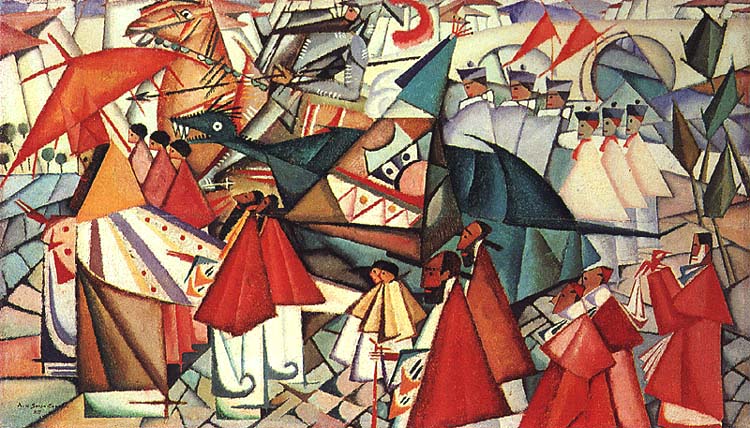
![[PT]](https://imgproxy.geocaching.com/fd803be3bfb7396e826555e469c7752394fb37ae?url=http%3A%2F%2Ffarm1.static.flickr.com%2F212%2F481411265_8928121d68_o.gif) Esta cache pretende homenagear um importante vulto da pintura portuguesa, Amadeo de Souza Cardoso e nada melhor que o concelho onde nasceu e viveu para o fazer.
Esta cache pretende homenagear um importante vulto da pintura portuguesa, Amadeo de Souza Cardoso e nada melhor que o concelho onde nasceu e viveu para o fazer.
![[EN]](https://imgproxy.geocaching.com/26dce0e20e21dd7e2c84c6c439fc1ab0a1b1385f?url=http%3A%2F%2Ffarm1.static.flickr.com%2F179%2F481411263_e6595005a4_o.gif) This cache aims to pay tribute to an important figure of the portuguese painting, Amadeo de Souza Cardoso and there's no better place to do it than the municipality where he was born and lived.
This cache aims to pay tribute to an important figure of the portuguese painting, Amadeo de Souza Cardoso and there's no better place to do it than the municipality where he was born and lived.
![[PT]](https://imgproxy.geocaching.com/fd803be3bfb7396e826555e469c7752394fb37ae?url=http%3A%2F%2Ffarm1.static.flickr.com%2F212%2F481411265_8928121d68_o.gif) Breve biografia de Amadeo de Souza Cardoso
Breve biografia de Amadeo de Souza Cardoso
Amadeo de Souza-Cardoso nasce a 14 de Novembro de 1887 em Manhufe, freguesia de Mancelos, no concelho de Amarante. Faz estudos liceais em Amarante e frequenta a Academia de Belas Artes de Lisboa em 1905, tentando seguir o curso de Arquitectura que interrompe para partir para Paris, em 1906, instalando-se, então, em Montparnasse. Frequenta ateliers preparatórios para o concurso de admissão às Beaux-Arts parisienses, ainda, com destino a Arquitectura, vindo, no entanto, a dedicar-se exclusivamente à Pintura, tendo frequentado a Academia Viti do pintor espanhol Anglada Camarasa. Nesta primeira época realiza várias caricaturas e algumas pinturas marcadas por aspectos naturalistas e impressionistas.
 Em 1910 faz uma estadia de alguns meses em Bruxelas e em 1911 expõe trabalhos no Salon des Indépendants, em Paris, havendo-se aproximado progressivamente das vanguardas e de artistas como Modigliani, Brancusi, Archipenko e Sonia Delaunay. Em 1912 publica o álbum XX Dessins e expõe no Salon des Indépendants e no Salon d'Áutomne.
Em 1910 faz uma estadia de alguns meses em Bruxelas e em 1911 expõe trabalhos no Salon des Indépendants, em Paris, havendo-se aproximado progressivamente das vanguardas e de artistas como Modigliani, Brancusi, Archipenko e Sonia Delaunay. Em 1912 publica o álbum XX Dessins e expõe no Salon des Indépendants e no Salon d'Áutomne.
Em 1913 toma parte, com oito trabalhos, nos Estados Unidos da América, no Armory Show, aí restando algumas obras expostas, hoje patentes ao público nos museus americanos. Nesse ano participa ainda no Herbstsalon da Galeria Der Sturm, em Berlin.
Em 1914 encontra-se em Barcelona com Gaudi, parte para Madrid onde é surpreendido pela guerra. Regressa a Portugal, instalando-se em Manhufe e casa no Porto com Lucia Pecetto que conhecera em Paris, já, em 1908. Pinta com grande constância, refaz algumas obras no seu atelier da Casa do Ribeiro, cultiva a amizade com Eduardo Viana, Almada Negreiros e os Delaunay (que então se instalaram em Vila do Conde). Em 1916 expõe no Porto 114 obras com o título Abstraccionismo que serão também expostas em Lisboa, num e noutro caso com novidade e algum escândalo.
Em 25 de Outubro de 1918 Amadeo morre em Espinho vítima da "pneumónica" que então grassava em Portugal.
![[EN]](https://imgproxy.geocaching.com/26dce0e20e21dd7e2c84c6c439fc1ab0a1b1385f?url=http%3A%2F%2Ffarm1.static.flickr.com%2F179%2F481411263_e6595005a4_o.gif) Brief biography of Amadeo de Souza Cardoso
Brief biography of Amadeo de Souza Cardoso
Amadeo Souza Cardozo was born in Manhufe, on 14th November 1887 in the district of Mancelos, near Amarante. After his initial schooling in Amarante, he started a course in Architecture in 1905, at the Lisbon School of Fine Arts. He gave up the course in 1906 to go to Paris, living in Montparnasse.
With a view to entering the Fine Arts Schools of Paris, he attended ateliers, thinking still of Architecture as his destiny. However, he became more and more interested in painting and studied at the Academia Viti of the Spanish painter, Anglada Camarasa. In this early period, he produced various caricatures and some paintings clearly influenced by naturalistic and impressionistic technics.
 In 1910, he spent several months in Brussels and, in 1911, exhibited work in Paris, in the Salon des Indépendants. He was moving ever closer to the avant guard movements of the day and to particular artists like Modigliani, Brancusi, Archipenko, Juan Gris and Robert and Sonia Delaunay. In 1912, he published the album, XX Dessins and exhibited in the Salon des Indépendats and in the Salon d'Automme. In 1913, he had eight works exhibited in the Armory Show in America. Some of these works are now part of collections in American museums. In the same year, he took part in the Herbstsalon, in Berlin, organised by the Der Sturm Gallery.
In 1910, he spent several months in Brussels and, in 1911, exhibited work in Paris, in the Salon des Indépendants. He was moving ever closer to the avant guard movements of the day and to particular artists like Modigliani, Brancusi, Archipenko, Juan Gris and Robert and Sonia Delaunay. In 1912, he published the album, XX Dessins and exhibited in the Salon des Indépendats and in the Salon d'Automme. In 1913, he had eight works exhibited in the Armory Show in America. Some of these works are now part of collections in American museums. In the same year, he took part in the Herbstsalon, in Berlin, organised by the Der Sturm Gallery.
The following year, in Barcelona, he met Gaudi. From there he travelled to Madrid, but the outbreak of war brought him back to Portugal. He returned to Manhufe and in Porto he married Lucia Pecetto whom he had met in Paris in 1908. He continued painting, redoing works in his studio in Casa do Ribeiro and cultivating friendships with Eduardo Viana, Alamada Negreiros and the Delaunays (who were then living in Vila do Conde).
In 1916, he exhibited 114 works under the title, Abstraccionismo (Abstractionism), in Porto and later Lisbon. In both cities the exhibitions were received as innovative but also rather scandalous.
On 25th October, 1918, Amadeo died in Espinho. He was a victim of pneumonic influenza which, at the time, was rife in Portugal.
![[PT]](https://imgproxy.geocaching.com/fd803be3bfb7396e826555e469c7752394fb37ae?url=http%3A%2F%2Ffarm1.static.flickr.com%2F212%2F481411265_8928121d68_o.gif) Resenha Histórica de Amarante
Resenha Histórica de Amarante
 Amarante não é uma cidade de uma só leitura. Olha-se Amarante e tem-se uma impressão muito nítida de que é o religioso que infunde carácter à cidade. Talvez a dimensão que ganha, no conjunto urbano, o monumental convento de São Gonçalo. Talvez a proximidade do rio e da serra, habitat das divindades de homens de outras eras. Talvez as duas coisas juntas. Seja o que for, a ideia que se colhe é mesmo essa, estamos num lugar que se define pelo religioso. A história não desmente esta impressão, antes a confirma. Amarante, por assim dizer, nasce quando chega a esse local um pregador com fama de santo. Estávamos então no séc. XIII. O pregador enamora-se do lugar, constrói uma ermida e começa a criar condições para ali nascer um povoado. Começa por construir uma ponte sobre o Tâmega (não ainda a que o General Silveira defenderia heroicamente séculos mais tarde), que induz a fixação de pessoas. Depois, a própria fama de santidade de Gonçalo vai atraindo sempre mais povo. O elemento religioso está pois bem presente na génese da actual cidade. Algum caminho de Santiago, vindo do sul, passaria próximo de Amarante, e os peregrinos, conhecendo a fama do santo pregador, não resistiram a fazer um pequeno desvio para o ver e ouvir em pessoa. Alguns acabariam por se fixar por ali definitivamente. Entretanto, por toda a região, numerosos mosteiros vão surgindo e funcionando como centros difusores de cultura e incentivadores de povoamento.
Amarante não é uma cidade de uma só leitura. Olha-se Amarante e tem-se uma impressão muito nítida de que é o religioso que infunde carácter à cidade. Talvez a dimensão que ganha, no conjunto urbano, o monumental convento de São Gonçalo. Talvez a proximidade do rio e da serra, habitat das divindades de homens de outras eras. Talvez as duas coisas juntas. Seja o que for, a ideia que se colhe é mesmo essa, estamos num lugar que se define pelo religioso. A história não desmente esta impressão, antes a confirma. Amarante, por assim dizer, nasce quando chega a esse local um pregador com fama de santo. Estávamos então no séc. XIII. O pregador enamora-se do lugar, constrói uma ermida e começa a criar condições para ali nascer um povoado. Começa por construir uma ponte sobre o Tâmega (não ainda a que o General Silveira defenderia heroicamente séculos mais tarde), que induz a fixação de pessoas. Depois, a própria fama de santidade de Gonçalo vai atraindo sempre mais povo. O elemento religioso está pois bem presente na génese da actual cidade. Algum caminho de Santiago, vindo do sul, passaria próximo de Amarante, e os peregrinos, conhecendo a fama do santo pregador, não resistiram a fazer um pequeno desvio para o ver e ouvir em pessoa. Alguns acabariam por se fixar por ali definitivamente. Entretanto, por toda a região, numerosos mosteiros vão surgindo e funcionando como centros difusores de cultura e incentivadores de povoamento.
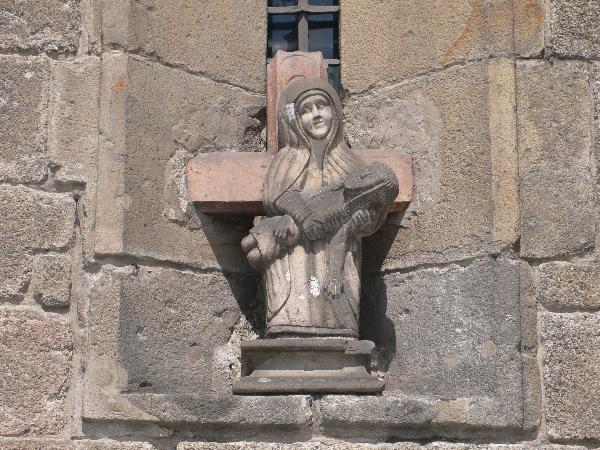 De novo, o elemento religioso a contribuir para o engrandecimento do concelho. Muito mais tarde, as monjas de Santa Clara desenvolvem uma doçaria que ainda hoje é possível encontrar na cidade, embora já fora do âmbito conventual. E as mais importantes manifestações colectivas - as festas e romarias - têm ainda que ver com a religião. Destaque, naturalmente, para a maior de todas - a de São Gonçalo, no primeiro Sábado de cada Junho. O religioso, sempre o religioso a marcar, a individualizar Amarante.
De novo, o elemento religioso a contribuir para o engrandecimento do concelho. Muito mais tarde, as monjas de Santa Clara desenvolvem uma doçaria que ainda hoje é possível encontrar na cidade, embora já fora do âmbito conventual. E as mais importantes manifestações colectivas - as festas e romarias - têm ainda que ver com a religião. Destaque, naturalmente, para a maior de todas - a de São Gonçalo, no primeiro Sábado de cada Junho. O religioso, sempre o religioso a marcar, a individualizar Amarante.
Mas há outras leituras possíveis. Há, por exemplo, um subtil odor aristocrático nesta cidade invulgar. É preciso ver que Amarante se encontra implantada numa zona de grande fertilidade agrícola, e que esta gerou uma aristocracia rural culta, que levantou belíssimos solares e propiciou o aparecimento de grandes vultos no campo das artes e das letras. Teixeira de Pascoaes e Amadeo de Souza Cardoso (que dá nome ao Museu onde existe uma apreciável representação da sua obra, lado a lado com uma importante colecção de pintura moderna e contemporânea) são dois deles, não certamente os únicos.
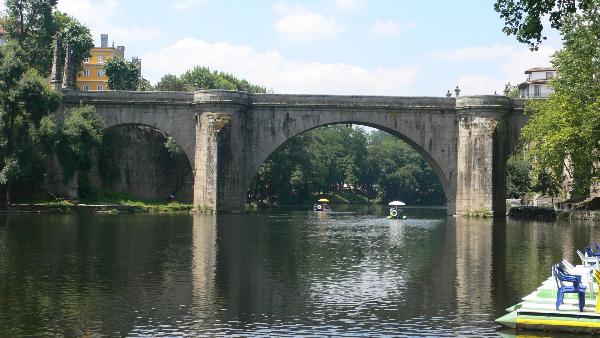 Enfim, não se pode esquecer a cumplicidade que a montanha e o rio mantém com Amarante. As serras do Marão, do Alvão e da Aboboreira enquadram a cidade, cercam-na de panorâmicas grandiosas e ares lavados. Nas suas dobras aninham-se povoados humildes, grandes tesouros vivos de velhos usos e artesanatos. E, perdidos pela solidão dos cumes, numerosos vestígios arqueológicos atestam antiquíssima ocupação. O rio opõe a sua leveza à pesada imobilidade da serra, e ainda hoje os açudes, praias, ínsuas, golas e penedos mantém nomes que evocam as antigas utilizações que o homem lhes dava.
Enfim, não se pode esquecer a cumplicidade que a montanha e o rio mantém com Amarante. As serras do Marão, do Alvão e da Aboboreira enquadram a cidade, cercam-na de panorâmicas grandiosas e ares lavados. Nas suas dobras aninham-se povoados humildes, grandes tesouros vivos de velhos usos e artesanatos. E, perdidos pela solidão dos cumes, numerosos vestígios arqueológicos atestam antiquíssima ocupação. O rio opõe a sua leveza à pesada imobilidade da serra, e ainda hoje os açudes, praias, ínsuas, golas e penedos mantém nomes que evocam as antigas utilizações que o homem lhes dava.
![[EN]](https://imgproxy.geocaching.com/26dce0e20e21dd7e2c84c6c439fc1ab0a1b1385f?url=http%3A%2F%2Ffarm1.static.flickr.com%2F179%2F481411263_e6595005a4_o.gif) History of Amarante
History of Amarante
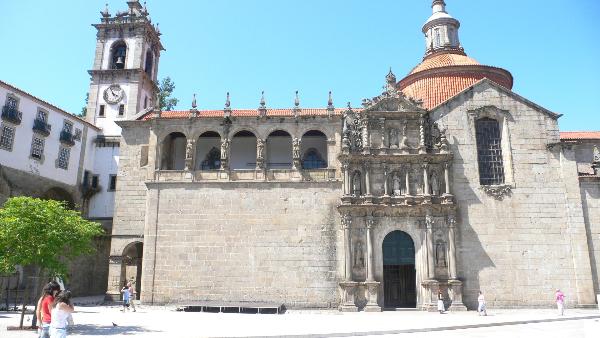 Amarante is not a city you can grasp in one reading.
Amarante is not a city you can grasp in one reading.
Amarante needs to be seen and you get a very clear impression that it is the religious element that lends character to the city. Perhaps it is the dimension the São Gonçalo Convent gains in an urban setting. Perhaps the proximity of the river and the mountain, the habitat of the divinities of men of other times. Perhaps both things together. No matter what, the idea that one gets is indeed that we are in a place which may be described as religious. History does not belie this impression. Au contraire, it bears it out. Amarante, so to say, comes into existence when a preacher with fame of saint visits this place.
This was in the 13th century. The preacher falls in love with the place, builds a hermitage and begins to create conditions for a village to take shape. He begins by throwing a bridge over Tâmega (not yet the bridge General Silveira would heroically defend centuries later), which encourages people to settle there. Later on, the very fame of Gonçalo's holiness keeps drawing more and more people to the place. The religious element is thus very much present in the creation of this city of today.
Some road from Santiago, coming from the south, would pass close to Amarante, and the pilgrims, knowing the fame of the preacher saint, could not help making a small detour to come and see and listen to him in person. Some of them would settle there for good. In the mean while, throughout the region, several monasteries were coming up and operating as centres spreading culture and encouraging people to settle there. Once again the religious element makes for the greatness of the district. Very much latter, the nuns of Santa Clara created a number of pastry that you can still find in the city, although it is outside the premises of the convent. The most important community events - feasts and pilgrimages - still have a great deal to do with religion. And the greatest of them all is the feast of Saint Gonçalo on the first Saturday of each month of June. It is again the religious element that marks Amarante and brings it this singular characteristic.
 But other readings are also possible. Like, for example, a subtle aristocratic fragance in this unusual city. You must realize that Amarante is located in a very fertile area. And this is what gave rise to a cultured rural aristocracy which built some extremely beautifull manors and fostered the emergence of major figures in the field of arts and literature. Teixeira de Pascoaes and Amadeo de Souza Cardoso (after whom the museum which displays a large number of his works is named, alongside a large collection of modern and contemporary paintings) are two of them, but certainly not the only ones.
But other readings are also possible. Like, for example, a subtle aristocratic fragance in this unusual city. You must realize that Amarante is located in a very fertile area. And this is what gave rise to a cultured rural aristocracy which built some extremely beautifull manors and fostered the emergence of major figures in the field of arts and literature. Teixeira de Pascoaes and Amadeo de Souza Cardoso (after whom the museum which displays a large number of his works is named, alongside a large collection of modern and contemporary paintings) are two of them, but certainly not the only ones.
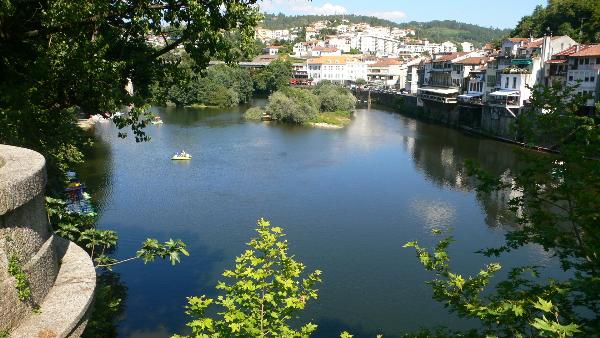 And lastly, you cannot forget the complicity the mountains and the river have with Amarante. The mountains of Marão, Alvão and Aboboreira surrounding the city offer fantastic panoramic views and clean air. In their folds humble villages nestle with great living treasures of old customs and handicrafts. And, lost in the solitude of the mountain tops are several archeological vestiges which bear witness to the very old occupation. The lightness of the river contrasts with the heavy immobile mountains. And even today the weirs, beaches, islets, gorges and boulders have names which evoke the old uses man made of them.
And lastly, you cannot forget the complicity the mountains and the river have with Amarante. The mountains of Marão, Alvão and Aboboreira surrounding the city offer fantastic panoramic views and clean air. In their folds humble villages nestle with great living treasures of old customs and handicrafts. And, lost in the solitude of the mountain tops are several archeological vestiges which bear witness to the very old occupation. The lightness of the river contrasts with the heavy immobile mountains. And even today the weirs, beaches, islets, gorges and boulders have names which evoke the old uses man made of them.
![[PT]](https://imgproxy.geocaching.com/fd803be3bfb7396e826555e469c7752394fb37ae?url=http%3A%2F%2Ffarm1.static.flickr.com%2F212%2F481411265_8928121d68_o.gif) A Cache
A Cache
Embora tivesse gostado de esconder esta cache perto do museu de Amadeo de Souza Cardoso, por razões técnicas e regras do geocaching tal não foi possível, no entanto escolhi um local que espero ser do vosso agrado.
A cache é uma embalagem de rolo fotográfico de 35 mm.
Na cache não há lápis ou caneta, leve algo para escrever consigo.
Esta cache não vai estar disponível durante o inverno, sendo removida do local durante essa estação.
Para que esta cache seja sempre uma surpresa, por favor não publique fotografias ou logs que possam revelar a sua localização.
![[EN]](https://imgproxy.geocaching.com/26dce0e20e21dd7e2c84c6c439fc1ab0a1b1385f?url=http%3A%2F%2Ffarm1.static.flickr.com%2F179%2F481411263_e6595005a4_o.gif) The Cache
The Cache
Although i would liked tho hide this cache near Amadeo de Souza Cardoso Museum, for technical reasons and geocaching rules that was not possible, nevertheless i've chosen a spot that i hope you'll like.
The cache is a 35mm photo film canister.
In the cache there's no pencil or pen you must take that with you.
This cache won't be available during winter, it will be removed from its hiding place during that season.
To keep the surprise please don't publish photos or logs that might reveal the cache location.